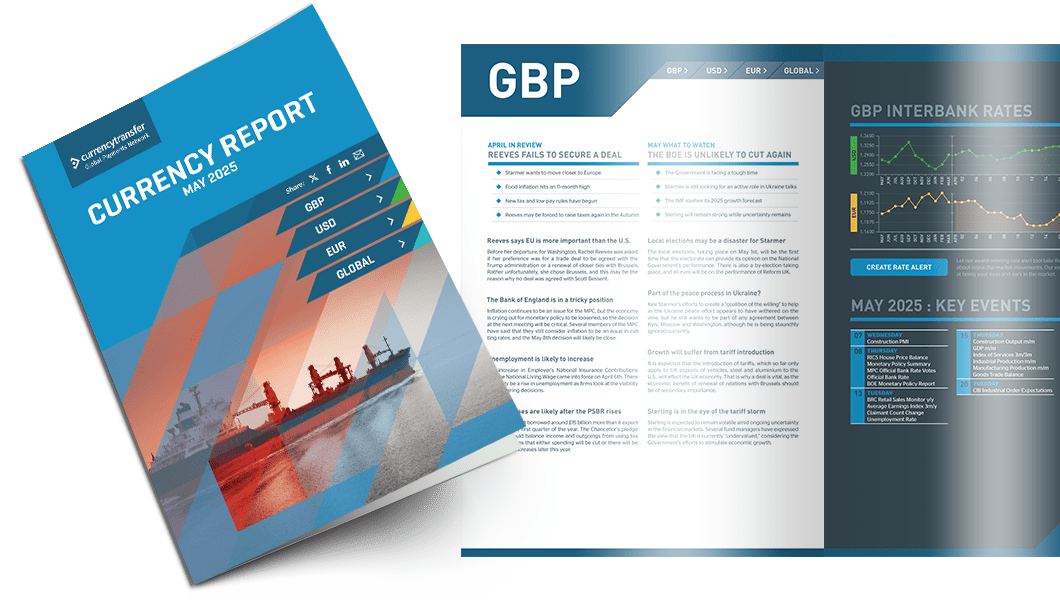
Highlights
- Diesel plunge good news for headline inflation
- Cities face key issues if workers continue to work remotely
- GDP shock as economy contracted QoQ in Q1
Free trade agreement “on ice” until 2025
Sunak, on a fleeting visit to Washington, met with President Biden yesterday and signed the “Atlantic Declaration”.
This set out a greater degree of economic security. The agreement includes a specific trade pact that includes deals over the vital minerals used in electric car batteries, closer cooperation over defence industry issues and new data protection protocols.
It falls well short of the free trade agreement that was promised as part of the Government’s Brexit strategy.
With both leaders facing re-election, Sunak brushed aside criticisms and concentrated on the positives which provide UK manufacturers access to around three-hundred and seventy billion dollars of green subsidies, which form part of Biden’s initiative to boost green investment in the U.S.
Sunak emphasized that the country will be protected from exposure to Chinese and Russian attempts to steal the country’s intellectual property, use tech for authoritarian means and withdraw access to vital energy almost at a whim.
Both leaders expressed their concern over the rise of artificial intelligence (AI) and pledged to work together on the regulation of the technology.
The deal is like an agreement that the U.S. signed with Japan earlier this year and adds a lustre to the “special relationship” that had been tarnished recently as America tried to form closed ties with the EU.
Close to 1.5 million UK households are facing significantly higher mortgage costs as their fixed-rate deals expire. With the Bank of England having repeatedly raised the base rate of interest over the past eighteen months, people with fixed-rate deals have been paying significantly less than the “market rate” for their home loans.
The effect on the economy of this transition, especially since very few fixed-rate deals still exist, could be significant as household budgets become stretched even further.
Yesterday, the pound climbed above the 1.25 level which had been something of a barrier over recent weeks. It reached a high of 1.2561 as the dollar corrected further, closing at 1.2560. There is further resistance around 1.2580, and it may be tough to clear that hurdle ahead of next week’s FOMC meeting in the U.S.

Read our latest currency report
Most impactful events planned this month and how they could impact your business
Markets pricing in “no hike” next week
Of course, this is not the first time that the market has been expecting such a move. Jerome Powell, the Fed Chairman has hinted that a pause or a “skip”, to use the fashionable terminology, was eminently possible but has made it clear that he and his colleagues are not yet ready to confirm that the cycle of hikes is at an end.
Last week several of his colleagues confirmed that they are leaning towards a pause, but if they truly are data-driven, the May employment report will have given them a reason to go with one more hike.
There were several analysts who spoke as long ago as January of the likelihood that the hawkish stance of the Fed would see new job creation slow to a trickle and maybe fall into negative.
Since the beginning of the year, over one point six million new jobs have been created as the market continued to be “red-hot”. This has not been true of all sectors of the economy, as inflation has remained uncomfortably high, although the fall has accelerated as interest rates have reached a restrictive state.
Martha Stewart, the home economist turned businesswoman, is by her own admission on a “rampage” to get people to abandon hybrid or work patterns and return to their offices as the centre of many cities threaten to become “ghost towns.”
She feels that the three-days-in-the-office and two-days-working-from-home culture that is pervading the working week is impossible to sustain.
Born out of the Pandemic, the working pattern could spell the end of so many small businesses and create localized recessions in many regional business hubs.
She likened the process to that in Europe when several countries, most in the North, are virtually shut down for the month of August.
Next week’s FOMC meeting will have the benefit of access to the May inflation report which is due to be published on Tuesday. It does seem that the committee’s minds are made up, but any upwards surprise in the data could change that.
Yesterday, the dollar index reacted poorly to the release of weekly jobless claims data. There were 261k new claims last week, an almost 10% increase from the previous week.
The dollar index fell to a low of 103.29 and closed at 103.32 as the market got a little spooked by the data which supplied another reason to expect the FOMC to pause.
“Blinkered” ECB will still raise rates despite the slowdown
Can the ECB really rush headlong into at least two more interest rate hikes when the Eurozone economy fell into contraction in the first quarter?
It had been felt that Germany would bounce back from its current weakness once inflation was brought under control, particularly since several nations like Portugal, Italy, Spain, and Greece were performing so well.
Now, along with Ireland which had the worst performing economy in the region, contracting by 4.6% in the first quarter, putting it behind Lithuania, in combination with Germany has pushed the entire Eurozone into contraction in Q1.
The data released so far for Q2 means that the region will be officially in recession once the figures for the whole quarter are released.
The timing of the hawkish comments made recently by Klaas Knot and Isabel Schnabel, appear to be at odds with the reality of what is happening on the ground.
It would be a first if a Central Bank raised interest rates when its economy is not just teetering on the brink of a recession but is about to declare one.
It does seem, however, that Christine Lagarde and her colleagues still see inflation as the most significant issue facing the region and are determined to stamp it out no matter the consequences.
Although the “smart money” is on the ECB ending its cycle of rate hikes at its July meeting, there is a growing view that the hike announced at next week’s meeting could be the last.
The Bank maintains that it is still data-driven, even if that view is afflicted with tunnel vision. There has been no mention, as has pervaded the discussions taking place in the U.S., of a pause in hikes to allow their effect to be fully felt.
Isabel Schnabel spoke earlier this week of her view that the full effect of the current series of rate hikes won’t be felt until next year, so it may be in the best interests of the Eurozone to end the cycle sooner rather than later.
The euro got the full benefit of the dollar’s correction yesterday. It rose to a high of 1.0787 and closed at 1.0782. There are a number of points of resistance before an attempt on the summit at 1.10 can be contemplated, and there is the small matter of two Central Bank meetings next week to be negotiated first.
Have a great day!

Exchange rate movements:
08 Jun - 09 Jun 2023
Click on a currency pair to set up a rate alert
Alan Hill
Alan has been involved in the FX market for more than 25 years and brings a wealth of experience to his content. His knowledge has been gained while trading through some of the most volatile periods of recent history. His commentary relies on an understanding of past events and how they will affect future market performance.